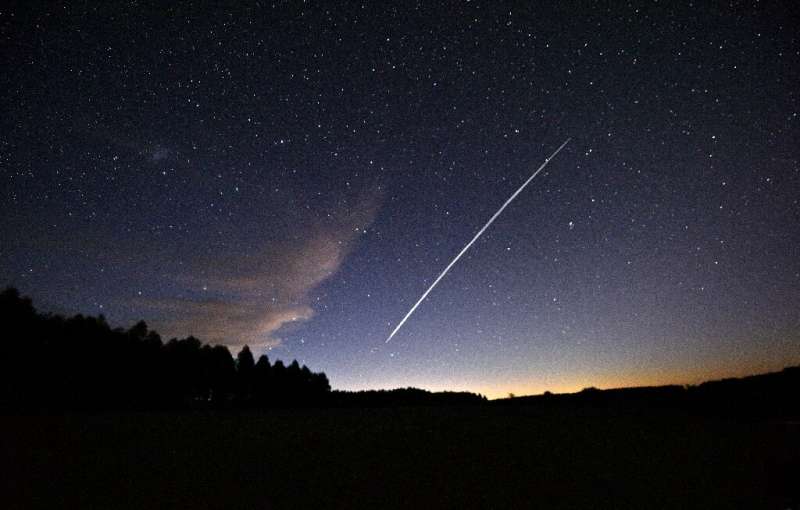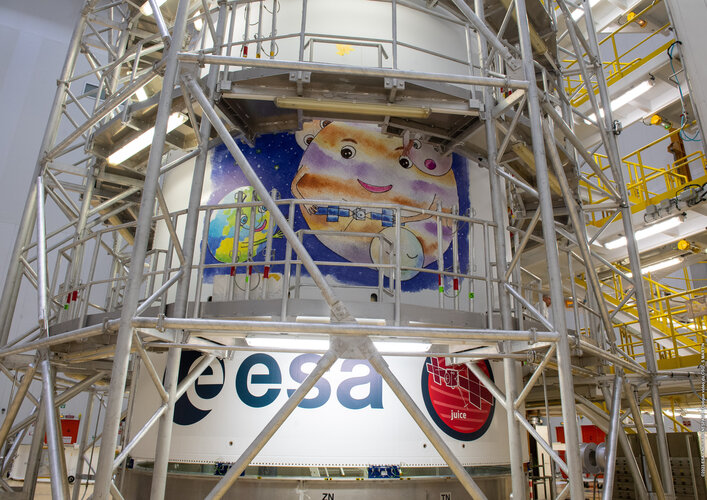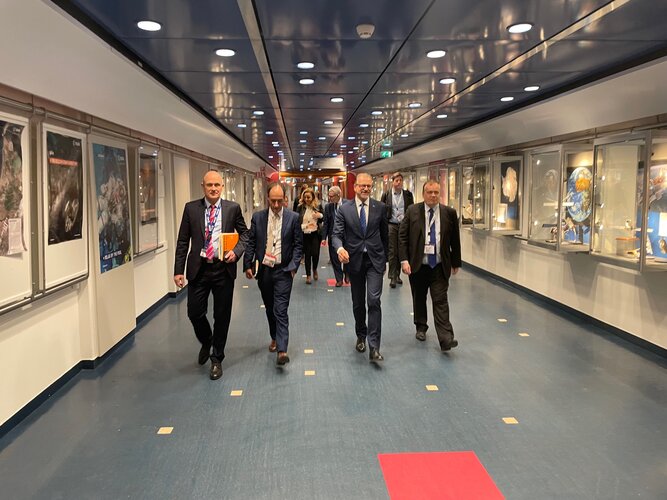
Copernical Team
Benchmark Space Systems fires up metal plasma and bi-prop thruster production
 Laser focused on delivering mobility without compromise, Benchmark Space Systems has signed contracts for nearly two dozen new electric metal plasma thrusters (MPTs), with some set to play a key role in upcoming, unnamed in-space servicing, assembly and manufacturing (ISAM) satellite docking demonstration missions.
The bulk of Benchmark's first MPT orders will be delivered this year, signa
Laser focused on delivering mobility without compromise, Benchmark Space Systems has signed contracts for nearly two dozen new electric metal plasma thrusters (MPTs), with some set to play a key role in upcoming, unnamed in-space servicing, assembly and manufacturing (ISAM) satellite docking demonstration missions.
The bulk of Benchmark's first MPT orders will be delivered this year, signa World leading propulsion system now integrated onto Australian-made satellite
 Neumann Space, a technology leader of in-space electric propulsion, has successfully completed integrating its world leading propulsion system called the Neumann Drive onto Skykraft's Australian designed and manufactured satellite.
This marks the first time the Neumann Drive, whose unique propulsion technology uses solid metallic propellant, has been integrated onto a satellite. The satell
Neumann Space, a technology leader of in-space electric propulsion, has successfully completed integrating its world leading propulsion system called the Neumann Drive onto Skykraft's Australian designed and manufactured satellite.
This marks the first time the Neumann Drive, whose unique propulsion technology uses solid metallic propellant, has been integrated onto a satellite. The satell Pale Blue successfully operates its water-based propulsion system in orbit
 Pale Blue succeeded in operating the water vapor propulsion system (resistojet) in low earth orbit. Pale Blue's propulsion system was installed on "EYE," a nano-satellite for STAR SPHERE Project, and tested for the first time in space. Going forward, the company will innovate and expand the commercial use of its water-based propulsion systems for small satellites.
Pale Blue's water-based p
Pale Blue succeeded in operating the water vapor propulsion system (resistojet) in low earth orbit. Pale Blue's propulsion system was installed on "EYE," a nano-satellite for STAR SPHERE Project, and tested for the first time in space. Going forward, the company will innovate and expand the commercial use of its water-based propulsion systems for small satellites.
Pale Blue's water-based p Astronomers sound alarm about light pollution from satellites

Astronomers on Monday warned that the light pollution created by the soaring number of satellites orbiting Earth poses an "unprecedented global threat to nature."
The number of satellites in low Earth orbit have more than doubled since 2019, when US company SpaceX launched the first "mega-constellation," which comprise thousands of satellites.
An armada of new internet constellations are planned to launch soon, adding thousands more satellites to the already congested area fewer than 2,000 kilometers (1,250 miles) above Earth.
Each new satellite increases the risk that it will smash into another object orbiting Earth, creating yet more debris.
This can create a chain reaction in which cascading collisions create ever smaller fragments of debris, further adding to the cloud of "space junk" reflecting light back to Earth.
Ariane 5 rocket decorated with winning Juice artwork
 Image:
A close up of an Ariane 5 rocket surrounded by scaffolding. In the centre of the Ariane 5 is the sticker showing the artwork (blue background with Jupiter, three icy moons, Earth and Juice.
Image:
A close up of an Ariane 5 rocket surrounded by scaffolding. In the centre of the Ariane 5 is the sticker showing the artwork (blue background with Jupiter, three icy moons, Earth and Juice. Earth observation supports latest UN climate report

The final instalment of the sixth assessment report by the United Nations' Intergovernmental Panel on Climate Change (IPCC) has been released today. The report warns that the planet has already warmed 1.1°C above pre-industrial levels, resulting in more frequent and intense extreme weather events that are causing increasingly dangerous impacts on nature and people in every region of the world.
The report includes a greater contribution of Earth observation data than its previous iterations in providing the physical evidence of Earth’s changing climate system – from sea-level rise, growing greenhouse-gas emissions and melting sea ice.
ESA’s exoplanet missions
 Video:
00:00:57
Video:
00:00:57
More than 5000 exoplanets have been discovered to date, but what do they look like? ESA’s dedicated exoplanet missions Cheops, Plato and Ariel are on a quest to find out. Cheops will focus its search on mini-Neptunes, planets with sizes between Earth and Neptune, on short orbits around their stars. Cheops will find out how large these planets are, and may detect whether the planets have clouds. Plato will look at all kinds of exoplanets and determine their sizes and ages. Plato’s instruments are so sensitive it may discover the first Earth-like planet on an Earth-like orbit.
Space seminar at ESA's technical heart
 Image:
Space seminar at ESA's technical heart
Image:
Space seminar at ESA's technical heart China's Shenzhou-15 astronauts to return in June
 China's Shenzhou-15 crew is scheduled to return to Earth in June, the China Manned Space Agency (CMSA) said Sunday.
The space station combination is operating steadily, and the Shenzhou-15 astronauts are in good condition, said the CMSA.
China will launch three space missions for the space station application and development this year, including the cargo craft Tianzhou-6 and the cre
China's Shenzhou-15 crew is scheduled to return to Earth in June, the China Manned Space Agency (CMSA) said Sunday.
The space station combination is operating steadily, and the Shenzhou-15 astronauts are in good condition, said the CMSA.
China will launch three space missions for the space station application and development this year, including the cargo craft Tianzhou-6 and the cre Earth Map and users work together for an eco-friendly world
 Rapid access to information is one of the largest barriers we have to deal with as a group of people in the Internet Age. Earth Map is a free application designed to be easily used and accessible to anyone with an internet connection and the desire to observe any environment at any time, with zero expertise (or travel) required.
This new tool features an intuitive point-and-click way of in
Rapid access to information is one of the largest barriers we have to deal with as a group of people in the Internet Age. Earth Map is a free application designed to be easily used and accessible to anyone with an internet connection and the desire to observe any environment at any time, with zero expertise (or travel) required.
This new tool features an intuitive point-and-click way of in 